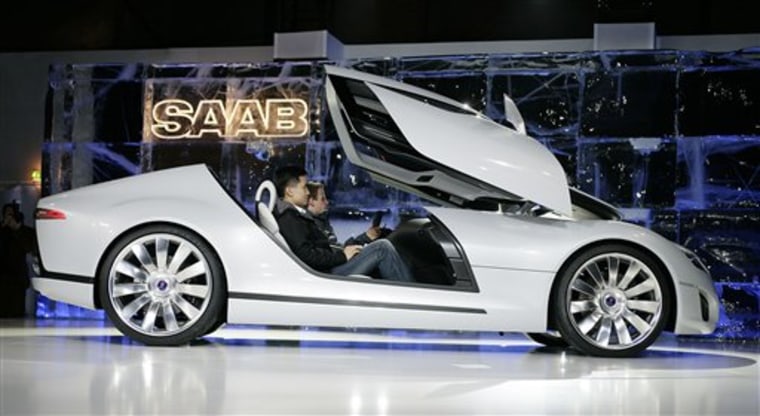In a design born from its aviation roots, Saab this week introduced a concept car that has a cockpit, runs on 100 percent ethanol and holds 400 horsepower under the hood.
Unveiled at the Geneva Auto Show Monday, the Aero X uses a cockpit canopy instead of doors or windshield pillars.
“The 400-hp, twin-turbo, BioPower V6 engine is fueled entirely by ethanol,” Saab said in a statement touting the environmental benefits of reduced emissions of carbon dioxide, a gas that many scientists tie to global warming.
Unlike fossil fuel, which releases carbon dioxide that was previously stored underground, ethanol essentially recycles C02 since the crops used to make the fuel reabsorb C02 when they are grown.
“We have been able to take the next step by using E100 fuel, pure 100 percent bioethanol,” Kjell Bergstrom, executive director of Saab Automobile Powertrain, said in the statement. “That means there are zero fossil CO2 emissions because we are not using any gasoline at all.”
Saab, a General Motors division that started life by making airplanes in Sweden, hasn’t committed to ever producing the Aero X and even the concept hasn’t been fully tested on a track. Saab would only say that “computer simulations anticipate zero to 62 mph acceleration in just 4.9 seconds and a 155 mph top speed.”
But Saab noted that it already sells an ethanol car in parts of Europe, the Saab 9-5 2.0t BioPower, and that some of the Aero X technology, especially turbocharging, could find its way in future models.
“Turbocharging and bioethanol make excellent partners,” Bergstrom said.
Saab stated that turbocharging with ethanol “allows the use of a higher compression ratio — giving more engine power — than is possible with gasoline because of the risk of harmful ‘knocking’ or pre-detonation.”
Bergstrom also touted another advantage with ethanol: “If there is no bioethanol available, the customer can still use gasoline at any time.”
Given high gasoline prices, ethanol has received much more attention recently. GM and Ford are touting their “flex fuel” models that run on gasoline or ethanol, and President Bush in his State of the Union speech last month spoke of technological breakthroughs that could lead to larger production volume via “biorefineries” that use farm waste, not just corn.
But large quantities are at least several years away, and the United States has a tiny infrastructure for ethanol stations. In addition, ethanol does reduce mileage a bit compared to gasoline, a factor that could turn off some drivers.
